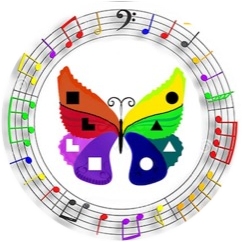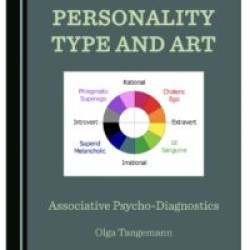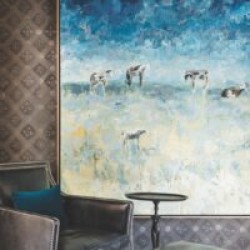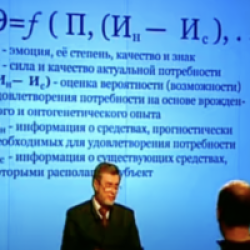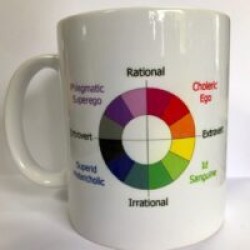TPE stands for Type of Psychic Energy. Associative model by Olga Tangemann.
From the perspective of socionics, each person possesses one of sixteen types of information metabolism. If we consider information and energy as something mutually connected and one-piece, then it is possible to assume that man is also a carrier and the spokesman of psychic energy of a specific type.
The question is: what types of psychic energy (TPE) are considered in the associative model? The Butterfly model refers to the dynamic structure of psyche on the basis of compensation between the different types of psychic energy, which are associated with four components of the structure of the personality: with the Ego, Id, Superego and Superid. In order to understand what is meant by these terms, let us turn to the theories of the personality of Sigmund Freud and Carl Jung….
The Superego is responsible for the moral development of a personality. It consists of two parts:
1. The Ego-Conscience, which punishes the Ego for poor behaviour by feelings of guilt;
2. The Ego-Ideal, which promises rewards for good behaviour by feelings of self-pride and self-appraisal.
A special role in the development of moral standards and in the formation of cultural values belongs to parents.
When we refer to the notion of a balanced personality we mean a harmony between the opposites such as mind and heart, the soul and body. On the basis of the unity of opposites within the psyche, the author associates the types of psychic energy (TPE) with socionics’ functions, and those in turn with the colour of chakras. (9). As a result, the sixteen personality types were divided into four groups:
1.Ego-types – rational extroverts. Extroverted functions: Fe (red) and Te (orange).
2. Id-types – irrational extroverts. Extroverted functions: Se (yellow) and Ne (green).
3. Superid-types – irrational introverts. Introverted functions: Ni (blue) and Si (dark-blue).
4. Superego-types – rational introverts. Introverted functions: Ti (violet) and Fi (purple/pink).

Picture 1. Association between colors and functions in socionics.
Superego – group Dostoevsky (EII), Dreiser (ESI), Gorky (LSI) and Robespierre (LII). Superego-values are closely associated with social values – morality and order. Particular attention is paid to the relationships either relationships between people (ethics, Fi) or relationships between objects (logic, Ti).
This is a fruitful period of life in type evolution history. It is characterized by acquiring wisdom and producing collective knowledge. Ego clashes are not welcome. All-human values, the economic use of the resources, the difference between right from wrong, teaching the younger generations how to live in peace and survive, accumulation of cultural values, traditions, religion are of greater importance. Vital forces are directed towards
Superego-types are the opposite of the life-loving and enthusiastic Id-types. Rather than thinking about themselves and their own desires, these people worry about how to satisfy the requirements and needs of others, how to improve their way of life and first of all, the lives of their loved ones. Superego-types are law-abiding, honest and responsible. They tend to fulfill the assigned work as high as diligently as possible so that they do not feel shameful in front of the others. When tackling an assignment, they go the extra mile to make sure their result is perfect. The quality of their work is their source of personal pride and critical self-esteem.
As a rule, they are quiet, reserved, hard-working people who know how to behave in any situation. There is obvious integrity in their views and consequence in their judgments and deeds. Superego-types are resistant to life’s hardships. They have a willpower that allows them to overcome obstacles and they are oriented to authority, total respect and recognition rather than random chance or momentary pleasure. Superego-types assert high moral values, keeping up an established order that is important for social conservation. Superego-types are the bright representatives of the psychic energy ‘Superego’, which according to the associative theory can be correlated with all light colors in general and white, pink and violet colors in particular. Each mentioned color endows the carrier of this type of energy with special characteristics.
White color – symbolizes the color of verity, impeccability, and excellence, attempting to make all that is implicit eventually explicit. This color is associated with clarity, sincerity, purity of thought, wisdom and high morality.
Pink color – is the color of sympathy, tenderness and romantic love. Pink color relaxes and calms, taking you to the world of sublime love, fairy tale and sweet dreams.
Violet color – is the color of spiritual contemplation, characterizing a person as a philosopher and taking your thoughts to the highest levels of existential knowledge, opening up the mysteries of the universe. This color is chosen by those who value intellectual and spiritual pursuits, who think about the ageless subjects of good and evil, justice, honesty, and the meaning of human life.
Representatives: Agnetha Faltskog, Clint Eastwood, Jerry Springer, Gwyneth Paltrow, Jodie Foster, Lionel Richi, Gotye etc.

